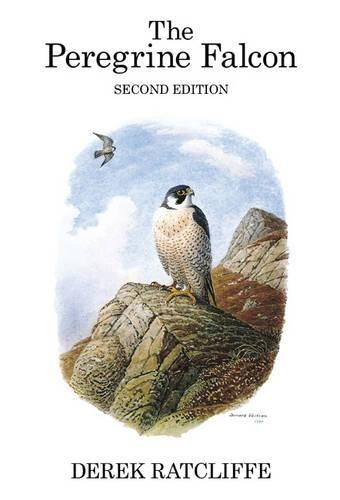
The Peregrine Falcon
(Hardback, 2nd edition)
Publishing Details
The Peregrine Falcon
By (Author) Derek Ratcliffe
Illustrated by Chris Rose
Bloomsbury Publishing PLC
T & AD Poyser
1st January 2011
2nd edition
United Kingdom
Classifications
General
Non Fiction
Zoology: birds (ornithology)
598.96
Physical Properties
Hardback
488
Width 156mm, Height 234mm, Spine 28mm
590g
Description
The first edition of The Peregrine Falcon was widely recognised as a classic of its kind, documenting not only the species' biology but also the sad tale of its decline due to the impact of pesticides. This extensively revised and enlarged second edition takes full account of important new developments in the story of this bird during the intervening 12 years. It reports one of the few notable successes in wildlife conservation: the full restoration of British and Irish Peregrine populations, and their appreciable recovery in other countries where numbers had also been greatly reduced by the impact of organochlorine pesticides. The pattern of increase in Britain has been extremely varied, from districts where numbers are now far higher than at any time in recorded history, to others where the bird is now at its lowest ebb. The examination of the reasons for these differences helps us to understand the most recent developments in the Peregrine saga. Particular attention has been paid to the recent major advances in our knowledge of Peregrine biology, such as its movements, population turnover, food and nesting habits. Many of the tables and figures have been revised and brought up to date so that this volume, like its predecessor, is once again by far the most detailed and readable reference on this most evocative of birds. Donald Watson's colour paintings, monochrome washes and line drawings, and the original photographs, illustrate the book as before. Cover illustration by Donald Watson
Author Bio
Derek Ratcliffe grew up in Carlisle and began watching Peregrines in the Lakeland fells while still a schoolboy. He later explored the Southern Uplands, Snowdonia and the Highlands, and developed a particular enthusiasm for the wildlife of the mountains and moorlands. In 1956 he joined the staff of the Nature Conservancy in Scotland, and a few years later was invited to organise the British Trust for Ornithology's national Peregrine Enquiry, which documented the species' population 'crash' of 1956-63. This led to his participation in the Monks Wood studies of the effects of agricultural pesticides on birds of prey, which eventually helped to bring about the phasing out of damaging organochlorine compounds, and allowed the subsequent recovery of affected species, including the Peregrine. Although in 1970 he became a scientific administrator - 'in order to have a bigger say in conservation policy' - Derek managed to maintain his involvement with Peregrines, and organised two further national surveys of the bird, in 1971 and 1981. He retired as Chief Scientist of the Nature Conservancy Council in 1989, and is now able to devote his time to field work and writing about wildlife and its conservation, free of the shackles of bureaucracy.
